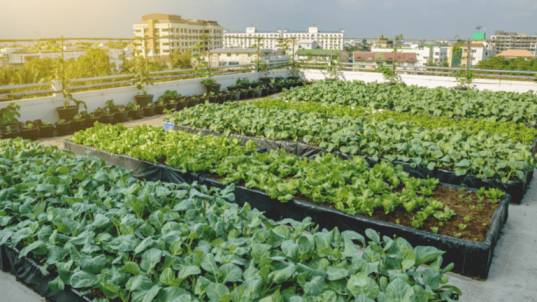Prefabricated buildings are not only a fast and efficient solution for construction projects, but they also have significant sustainability benefits. As climate change and environmental concerns become increasingly important, sustainable building materials and construction methods are becoming more prevalent. Prefabricated buildings offer a range of benefits that make them a sustainable choice for construction projects.
Reduced Waste
One of the primary benefits of using prefabricated buildings is the reduction of waste during the construction process. Because prefabricated buildings are constructed in a controlled environment, the amount of waste produced during construction is significantly reduced. This is because the materials are precisely measured and cut to the necessary size, reducing the amount of scrap material that is left over. In contrast, traditional construction methods often result in significant waste due to inaccurate measurements, cutting errors, and over-ordering of materials.
Improved Energy Efficiency
Prefabricated buildings are designed to be energy-efficient. They are constructed with materials that provide better insulation than traditional buildings, reducing the energy needed to heat and cool the building. Additionally, because the construction process is completed in a controlled environment, the building is designed with energy efficiency in mind from the outset. This means that the design can easily incorporate energy-efficient features such as solar panels, innovative heating and cooling systems, and green roofs.
Eco-Friendly Materials
Prefabricated buildings can be constructed using a range of eco-friendly materials. These materials are often sustainable, recyclable, and have a lower carbon footprint than traditional building materials. Examples of eco-friendly materials used in prefabricated buildings include bamboo, recycled steel, and structural insulated panels (SIPs) made from foam insulation sandwiched between two layers of oriented strand board (OSB).
Case Studies
There are several examples of successful sustainable prefabricated building projects. One example is the Cross Laminated Timber (CLT) apartment building in Vancouver, Canada. The building is made entirely of sustainably harvested wood and uses CLT panels for its walls, floors, and roof. The building is designed to be energy-efficient and includes features such as triple-glazed windows and a green roof. Using CLT panels also reduced the construction time, resulting in a cost-effective and sustainable building.
Another example of a sustainable prefabricated building project is the East Village Studio in New York City. The building was constructed using SIPs and features a green roof, solar panels, and a rainwater harvesting system. Using SIPs reduced the waste produced during construction, and the building’s energy-efficient features have resulted in significant cost savings for the tenants.
Potential for a Sustainable Future
The potential for prefabricated buildings like Container House to contribute to a more sustainable future is significant. As climate change continues to become a more pressing concern, sustainable construction methods are becoming increasingly important. Prefabricated buildings offer a range of benefits that make them an ideal solution for sustainable construction projects.
Additionally, because the construction process is completed in a controlled environment, there is the potential to reduce the environmental impact of construction sites. Traditional construction sites can be a significant pollution, noise, and waste source. By using prefabricated buildings, the amount of pollution and waste produced during the construction process can be significantly reduced.
Conclusion
Prefabricated buildings offer a range of sustainability benefits, including reduced waste, improved energy efficiency, and the use of eco-friendly materials. Successful prefabricated building projects such as the CLT apartment building in Vancouver and the East Village Studio in New York City demonstrate the potential for the industry to contribute to a more sustainable future. As environmental concerns continue to grow, using sustainable building materials and construction methods will become increasingly important, and prefabricated buildings offer an ideal solution for sustainable construction projects.
Visit Here: How to Choose the Right Shipping Container Home
?Green Roofs, Living Walls, and Green Infastructure Read More
Ellenrose306




Leave a Reply